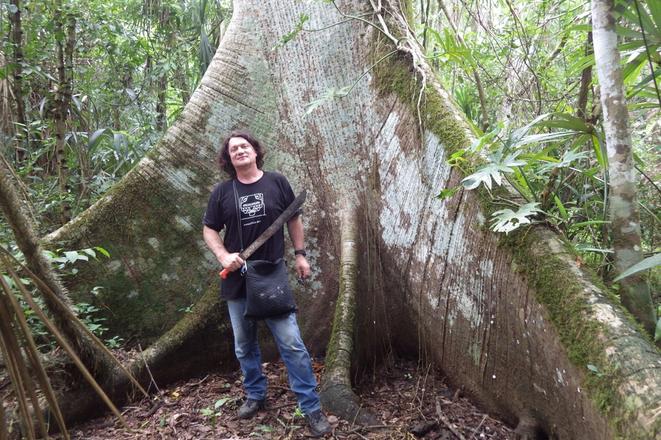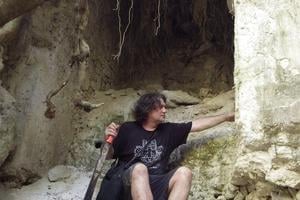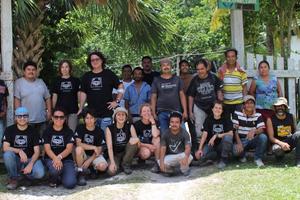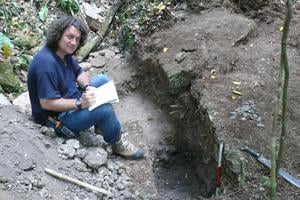What you will find in this article
How Slovak Milan Kováč became a leading Maya expert
What fascinates him about the Maya culture
How the research of his team has contributed to changing the view on the ancient Mayas
What may have caused the collapse of the Maya civilisation
Why Milan Kováč wants to stay in Slovakia
The Lacandon Maya do not have a word for “thank you,” and shaking hands is a very intimate gesture while a kiss is even unthinkable. They do not have a morning greeting and use the phrase “I’m cold” instead.
“We think that our societal stereotypes are global; but they are not,” said prominent Maya expert Milan Kováč, who has been involved in researching this distant culture his whole professional life. One of the outliers among scientists based in Slovakia, Kováč is participating in an international research project. This project has led to discoveries that have transformed knowledge about the ancient Maya civilisation. “This is what I like about studying the Maya: their world is so different that it shows ours in a completely different light.”
Even though it was a stone civilisation, the Maya were excellent at math and astronomy. They were the only civilisation in the region that used a complex writing system. Without use of the wheel, they built huge cities and melioration systems, resulting in sophisticated agriculture able to support millions of people. The Maya culture, the most developed and sophisticated of the pre-Columbian civilisations in America, developed completely apart from the Old World. This is why Kováč considers it the best example for a better understanding of the world and humanity, as well as obtaining answers to the most fundamental questions about us.
“When trying to understand people and ourselves, carrying out examinations
through the prism of our own culture is not very useful because this leads to many stereotypes and subconscious expectations, where our world is the only possible one,” explains Kováč on why it is important to study the ancient Mayan civilisation.
Milan Kováč
born 1967
the head of the Department of Comparative Religions and Centre for Mesoamerican Studies at the Faculty of Arts, Comenius University Bratislava
a leading scholar in the fields of Maya Anthropology and Maya Archaeology and the founder of Mesoamerican and Maya studies in Slovakia
Kováč spent several long-term study stays with the Lacandon Maya in Chiapas, Mexico, between 1999 and 2008
since 2009 he has been leading the archaeological project in the Mayan town of Uaxactún in Guatemala
he has co-authored and published several books, including the critical translation of Diego de Landa’s Account of the Affairs of Yucatan into Slovak, Golden Ram - Folk Belief and Magic Under Radzim Mountain, and The Jaguar Sun - Olmec, Maya and the Aztec Religious World
Becoming a Maya expert
Kováč has been fascinated by ancient cultures from his childhood. The Maya became the main field of his career.
“When you pursue your childhood dream stubbornly enough, you attain it,” said Kováč, who was not allowed to study at university under the totalitarian regime. Only after the collapse of Communism in 1989 was he was able to enroll at Comenius University in Bratislava to study philosophy and history.
In 1994, he organised the first Slovak expedition focusing on ancient Maya constructions and towns. Some years later, he launched an anthropological examination of the Lacandon, one of the descendent tribes of the ancient Maya. While living deep in the jungle in Chiapas Mexico, these people have preserved the original Maya language, their myths and culture to a significant extent. Between 1999 and 2008, Kováč repeatedly travelled to this area for several long-term stays, some of them lasting six months.
K’in, the Sun
“These stays were of key importance for me and my further scientific work,” said Kováč. “I learned their language, collected their myths and what was very important – comprehending their mentality.”
This has helped him to understand all aspects of the Maya’s life. Thanks to what he learned with the Lacandon, he better understands the history of the Maya, including the ancient one.
“I gradually became a Maya expert,” said Kováč. In fact, he became something of a local during his stays. He even received one of the four names used by men: – K’in, meaning Sun in English. The Lacandon in the village he lived in named him K’in because they were not able to pronounce his name.


 Milan Kováč (source: Archive of Milan Kováč)
Milan Kováč (source: Archive of Milan Kováč)


